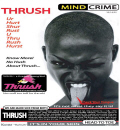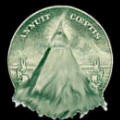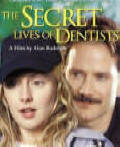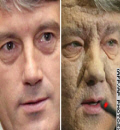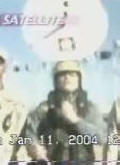This arrangement - an artificial atom of variable energy and shape - could be further enhanced by placing a second, identical set of electrodes on the quantum well's lower face, probably with an insulating layer below that. The atom's characteristics would then be fully adjustable in three dimensions. This is important because "pancake" elements, lacking one whole dimension to cram electrons into, have a much simpler periodic table than the one Mendeleyev derived for natural atoms in the late 19th century. If you want the full richness of nature - and more! - you really want that third dimension.
Even more complex arrangements might be possible, but remember these structures are so small - a few thousand atoms at most - that we don't have the broad flexibility we do at larger scales. It's like building with Legos - the smaller you get, the more restricted your design choices.
A final and critical difference between natural and artificial atoms is that nuclear forces limit the number of protons in a reliable atomic nucleus to 92, the atomic number of Uranium. Unfortunately, since protons and electrons are paired, this means that atoms containing more than 92 electrons have short half-lives - that is, they're radioactive and therefore annoyingly difficult to use for anything other than bomb and power-plant fuel. This is where the real killer app of artificial atoms comes in: Since they're not burdened with a nucleus, they can remain stable with hundreds or even thousands of electrons crammed inside, forming gigantic new orbitals classical chemists could never have imagined.
The remarkable properties of these new orbitals have been studied by Paul L. McEuen of Cornell, and also by Marcus, Kastner, and another MIT scientist named Raymond C. Ashoori. Their finding: much weirdness. In natural atoms, electrons move in fixed orbits based on their energy and spin, and while this is also true of artificial atoms, the orbits can be quite different even for an atom with very few electrons. Some orbitals exhibit electron bunching, a phenomenon that permits one or more electrons to slip in and out of the atom with zero energy cost. Ashoori has found that this occurs when the artificial atom's electron cloud splits into two pieces: an inner circle and an outer ring - something that would never happen in a natural atom.
Stable natural elements are limited to 92 electron states. Artificial atoms can have hundreds, even thousands, making today's periodic table look puny.
Even where this bunching doesn't occur, recent progress in single-electron imaging has revealed the structure of artificial orbitals, some of which turn out to be very thready and discrete, more like billiard ball trajectories than clouds. The images are spectacular, and the physicists, being hackers of a sort, are nearly as proud of their detection methods as they are of the actual results. In discussion, the two are so deeply intertwined that they might as well be one thing. Perhaps, for the folks down here in the trenches of discovery, they are one thing.
Another finding these guys are mulling over is that larger orbitals are influenced by magnetic fields much more than small ones in a natural atom are. Effects can be easily produced in quantum dots that would appear in atoms only at field strengths of a million tesla or more - about 10,000 times stronger than we can presently create. And in larger quantum dots - particularly asymmetric ones with large numbers of electrons - the shell structure breaks down altogether, yielding electron-gas structures with bizarre magnetic properties. Indeed, switchable exotic magnets may be an important application for artificial atoms.
Clearly, artificial atoms - while remarkably similar to natural ones - are capable of exhibiting a wide range of structures, characteristics, and behaviors that do not occur in nature. In fact, the 92 natural structures are tiny and by no means preferred islands in the sea of this technology's overall capability. This we now know: Doping a semiconductor with artificial atoms can modify its physical, optical, and electrical properties in decidedly unnatural ways, with decidedly unnatural results.
And keep in mind that the artificial atoms don't just sit there; like cellular automata, they interact with their neighbors. We can not only form chemical bonds between them, but also turn the bonds on and off as electrons are pumped in and out. This is virtual chemistry, or pseudochemistry, or artificial chemistry, but chemistry nonetheless. Nano- and microtechnology promise to rearrange the shape and texture of materials, which is great but not really so different from what we can already achieve manually, with a machine shop or even a simple potter's wheel. Nanotechnology may even be able to rearrange atoms, albeit slowly, like a sort of mechanized plant or fungus. But here is something entirely new: a material capable of changing its very substance, instantaneously.
This Way to
the Future
Up to this point, I've been coloring mainly inside the lines of existing research, not straying too far into future applications. This reflects the prejudices of the researchers themselves: Despite the enormous potential of this field, no respectable scientist has stepped into the media limelight to discuss its future goals and benefits, or even its state of the art. Cornell's Paul McEuen, one of the more outspoken figures in the field, went on record in Science magazine, saying, "The next step is to assemble these atoms into artificial molecules ... and new kinds of solids - ones that could not be realized with real atoms." The comment was subsequently picked up by Science News, with its 1.2 million readers, making the quote perhaps the most public prediction any scientist has yet made about programmable matter.
That tantalizing turn of phrase, though, is one that crops up constantly in the field's own literature. It's almost a direct quote from Marc Kastner, in a 1993 Physics Today paper, in which he incidentally coined the term "artificial atom." What's interesting is that this prediction is generally found in the summations and dismissals at the end of technical papers, and has not visibly evolved in the nine years since it first appeared. When pressed on this point, university scientists grow taciturn, or talk airily about the differences between basic and applied research, or science and engineering. "Scientists," Charlie Marcus observes dryly, "don't necessarily make better futurists than the people down at the doughnut shop. So much advancement depends on serendipity - the laser came out of microwave research, not a desire by Schawlow and Townes to improve surgery or record players."



.jpg)

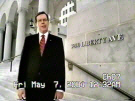

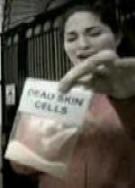

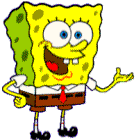


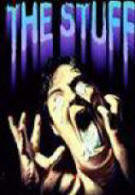
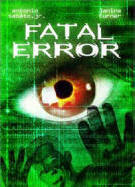
.jpg)








